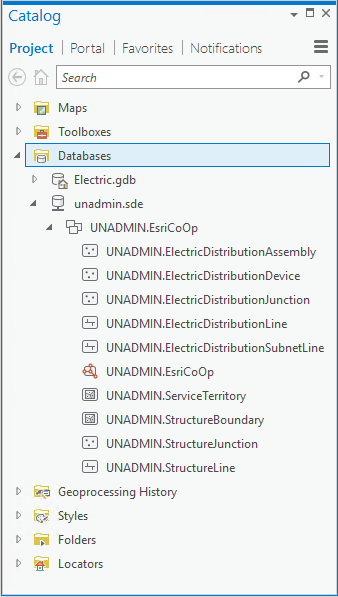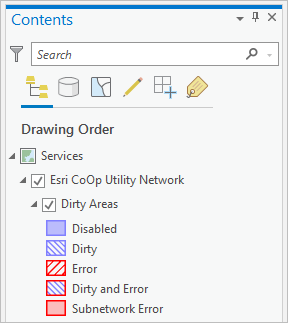ArcGIS Pro provides a variety of utility network tools to help you create, configure, and work with your utility network system. You can access utility network tools and commands, network properties, and dirty areas through the utility network layer.
Note:
If you are unfamiliar with any of the terminology used here, see Utility network vocabulary for more information.
Create and configure the utility network
Before creating and configuring a utility network, it is important to understand the different deployment types and options for configuration. The geodatabase type that stores the utility network will determine the type of deployment, which also impacts the configuration, sharing capabilities, and licensing of the utility network. You can create and configure a utility network manually using core tools or using a Utility Network Foundation to accelerate the process. After the initial implementation, you can use these same tools to modify the configuration based on changes in the data model.
For more information about creating and configuring a utility network, see Utility network creation and configuration.
Utility network dataset and layer
When a utility network is created, a utility network dataset is generated with the specified name. This name represents part of the fully qualified name for the utility network when viewed in the Catalog pane.
When added to an active map, the layer provides access to the Utility Network tab, network properties, and dirty areas. The layer name shown in the Contents pane is the utility network name followed by Utility Network, for example, EsriCoOp Utility Network.
Learn more about the utility network layer


Utility Network tab
The Utility Network contextual tab becomes available when you add a utility network to a map. This tab contains the tools and commands most commonly used in utility network workflows with network topology, with associations, and when performing tracing and subnetwork management tasks.

Learn more about the Utility Network tab
The Utility Network tab also includes commands to create network diagrams, find existing diagrams, and overwrite or append features to opened diagrams. More specific network diagram commands and tools can be found on the Network Diagram tab. This contextual tab becomes available when you create a diagram or open an existing diagram.
Utility Network toolbox
The Utility Network toolbox contains a number of tools that can be used to create and manage the utility network for individual use, modeling, and scripting purposes. These tools can be accessed on the Analysis tab in the Geoprocessing group. Some of the same operations available using the geoprocessing tools can also be accessed from the Utility Network and Network Diagram contextual tabs as described previously.
